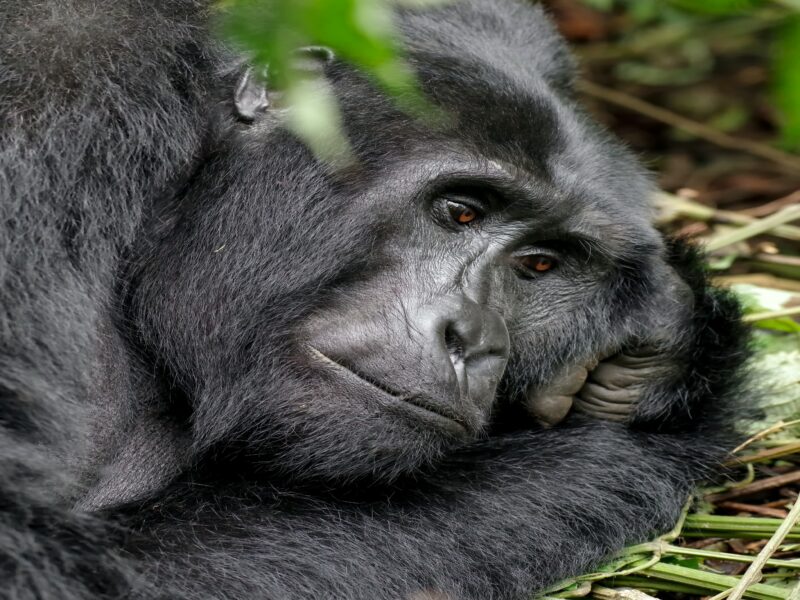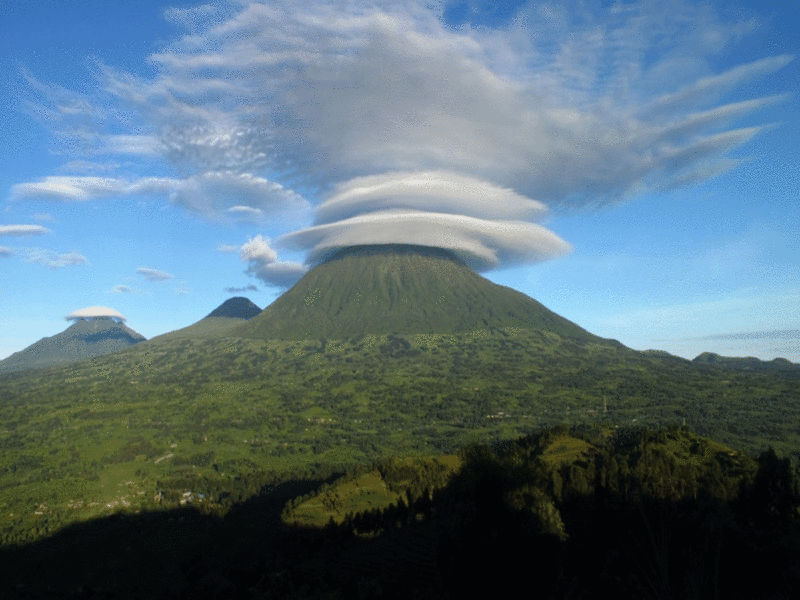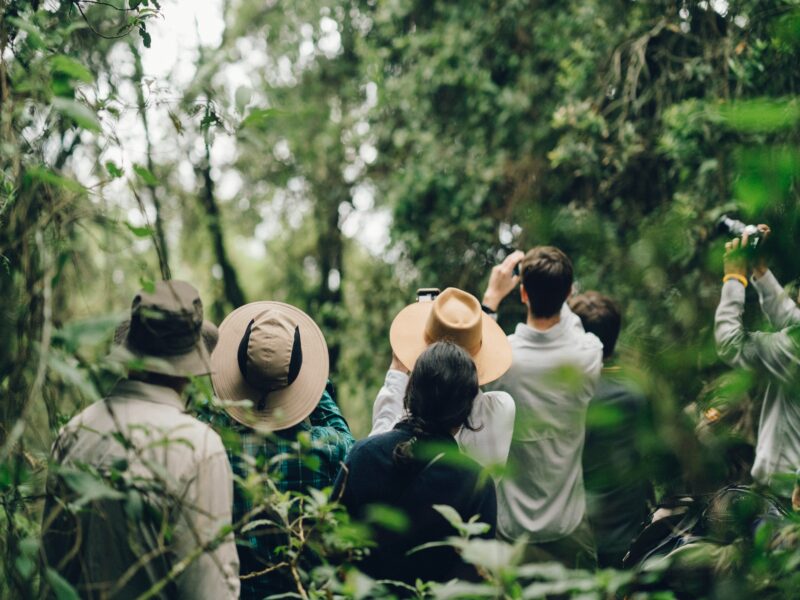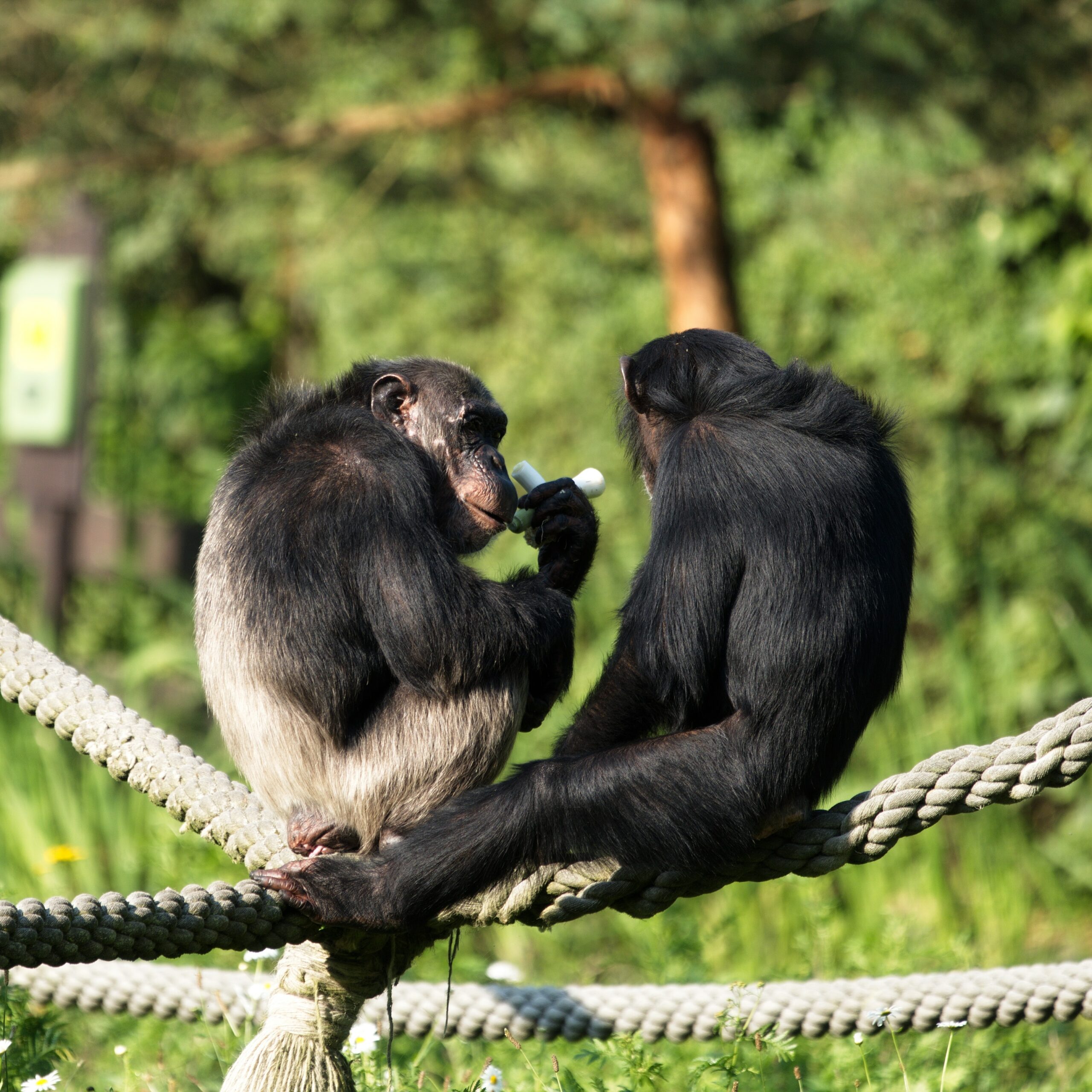GORILLA TREKKING SAFARIS
One of the bucket list items that many clients present to us, is a gorilla trekking safari. People have a fascination with gorillas as they are said to be one of our closest living relatives and they cannot be found in zoos….you have to travel to Africa to see them in their natural habitat. Gorilla trekking offers one of Africa’s most profound wildlife encounters – playful toddlers, caring mothers and the majestic silverbacks make for a once-in-a-lifetime adventure. Furthermore, so rare are the gorillas and so few in number, that the trackers have given them individual names and are able to identify them based on personality and face alone.
So what does a gorilla trekking safari entail? Hours of hiking on steep, narrow footpaths, sometimes in the pouring rain. There is a scout ahead of you, slashing a path through the thick, jungle foliage with a machete. All hardships are forgotten when you finally come across the gorillas. The hour spent with them is magical and goes by so quickly. Females gather in groups, tending to their mischievous young ones, while the silverback (male gorilla) watches over them all with a benevolent eye.

Gorilla trekking safaris can be done in the following countries:
Rwanda
A tiny country that packs a punch when it comes to sheer natural beauty, Rwanda offers the most accessible gorilla trekking experience. The stunning Volcanoes National Park is located just 80 km from Kigali airport, and is the mystical backdrop for the mountain gorilla trekking experience. The park comprises of prime rainforest and encompasses 5 of the 8 volcanoes that make up the Virunga Mountain Range.
Gorillas are highly social creatures, who spend most of their waking hours seeking food on the ground, moving less than a km a day, and this makes them easy to track. The trek takes you through towering redwood trees, bamboo, vines and giant lobelias to one of the habituated gorilla families where you get to spend an hour watching them.
The Park was home to Dian Fossey, a pioneer in studying gorilla behavior. Now, reformed poachers are employed by the conservation projects and 10% of the revenue generated from tourism goes into community projects around the park.

The cost of a permit is US$ 1500 per person, and allows you an hour with the gorilla family. As these get sold out well in advance, you need to book your permits as soon as you decide you want to visit Rwanda. The group size is maximum 8 persons, and minimum age for trekking is 15 years. Trekkers must be healthy, with no signs of flu or a cold.
Uganda
In Uganda, mountain gorillas can be seen in the Bwindi Impenetrable Forest.
The forest is located a day’s drive from Kampala, and charter flights from Kampala are also available. Bwindi is an ancient rain forest and extends over a series of steep ridges in the Virunga Mountain Range, and consists of both montane and lowland forest. Roughly half of the world’s total gorilla population lives here.
Permits cost US$ 700 per person, allowing you an hour with the gorilla family. The group size is maximum 8 persons, and minimum age for trekking is 15 years. Trekkers must be healthy, with no signs of flu or a cold.
Republic of Congo (not to be confused with the Democratic Republic of Congo)
The gorilla trekking experience here differs from the other two parks in the following ways:
- You can walk directly from your camp into the forest to start looking for the gorillas, instead of taking a road transfer to the park gate, then hiking into the mountains for anything between 2 to 5 hours, as is the case with Rwanda and Uganda.
- The terrain here is flatter and the altitude lower so the species of gorilla found here is the Western lowland gorilla (smaller, less shaggy, with softer fur, narrower faces and rounder nostrils)
- Here, you have the opportunity to go trekking for 3 consecutive days, allowing you to spend more time with the gorilla families.
The permit here costs US$ 350 per person and this allows you one hour with the gorilla family. Maximum group size is 4-6 guests, while minimum age for trekking is 15 years. Wearing of a face mask is compulsory.
CHIMPANZEE TREKKING SAFARIS
This is very similar to gorilla trekking safaris, where you go on a hike with trained rangers, to see and spend time with these primates in the wild. Chimps live in larger groups than gorillas (typical chimp troops number between 50 to 150 individuals), and chimpanzee trekking is a loud, action-packed and exhilarating adventure, balanced by intimate and immersive moments.
Uganda
The 3 places in Uganda you can trek for chimpanzees are:
Kibale Forest
Located 230 km from Bwindi, this is one of the best places to see chimps in their native habitat. The forest hosts about 1200 – 1500 chimps and is a diverse rainforest approximately the size of New York city, on the edge of the Queen Elizabeth National Park.
Permits for the high season go for US$ 1500 per person and for the low season, they can go down to US$ 100 per person.
Kyambura Gorge
This gorge is also located on the edge of the Queen Elizabeth Park, and is filled with a tropical rainforest that is home to about 16 chimps.
Budongo Forest
It is located near Murchison Falls and is a beautiful rainforest with 800 chimps. The forest is under the protection of the Jane Goodall Institute. Permits here go for US$ 250 per person and two departure times are offered – 8 am and 2 pm.
Group sizes are between 6-8 persons and you can hire a porter to carry your backpack and help you over difficult, slippery sections. You get to spend an hour with the chimps, but if you want more time with them, you can opt for a chimpanzee habituation experience for US$ 250 per person. Here you will depart at 6 am and spend 4 hours with the chimps.

Tanzania
The 2 places you can get to see the chimps are:
Gombe National Park
Lying on the northern shore of Lake Tanganyika, the park is only accessible by boat. This pocket sized park is home to 95 chimps, confined to a habitat that skirts the steep slopes and river valleys hugging the shore. Group size is limited to 6 persons, aged 15 and above and visits are capped at one hour.
Mahale Mountains National Park
This park is also accessed only by boat, and is road free. Due to the steep inclines and dense jungle, this is counted as among the most strenuous trekking experience. Although there are 800 primates, only 60 individuals are habituated.
Rwanda
Nyungwe Forest Park is a high altitude and mountainous reserve, which is home to around 500 chimps, from which 2 troops are habituated. Group size is limited to 8 persons, aged 15 years and above, and are led by a guide and an armed ranger, in addition to optional porters. Due to the high altitude (9600 feet above sea level), some travelers may need to acclimatize.
Democratic Republic of Congo
Virunga National Park was the African continent’s first National Park, established in 1925. Due to civil unrest, the Park was closed but reopened in 2014. It is accessed via Rwanda, but fair warning…the Park is constantly threatened by war, poaching and illegal activities. The treks to the 32 habituated chimps are limited to 4 persons only and departure is daily at 6 am.
What is the difference between gorilla trekking and chimpanzee trekking?
- The pace for chimpanzee trekking is much faster. Gorillas move slowly, feeding on the ground and resting, while chimps are in the trees, feeding and swinging through canopies. Even when on the ground, they move quickly through the forest. This makes it trickier to spot them and also harder to get good photos of them. Sometimes you need to just enjoy the moment and forget about taking pictures.
- As chimps live and interact in communities, fights and social disputes can break out at any time, accompanied by movement and vocalization. Gorillas tend to be more subdued.
- On gorilla treks, you will be assigned a specific family to visit. This means your group of 8 will be the only group watching that family. With chimps living in larger communities, there will be other trekking groups watching the same chimp community. Therefore you may end up with more people than your original party number.
- With gorillas, you will have time to unpack your camera/phone and frame the ideal shot. Chimps move fast and you might be faced with your first chimp within moments, with no time to prepare your camera/phone.
- Gorilla treks last longer, some as long as 8 hours, while chimpanzee treks typically takes between 30 minutes to 3 hours.
Remember, getting to spend time with these primates is a privilege which should not be taken lightly. Maintain your distance at all time, listen to your guide and never mimic them, either physically or vocally, as you don’t know what they might be saying.
Above all, enjoy the experience.


Comment (0)